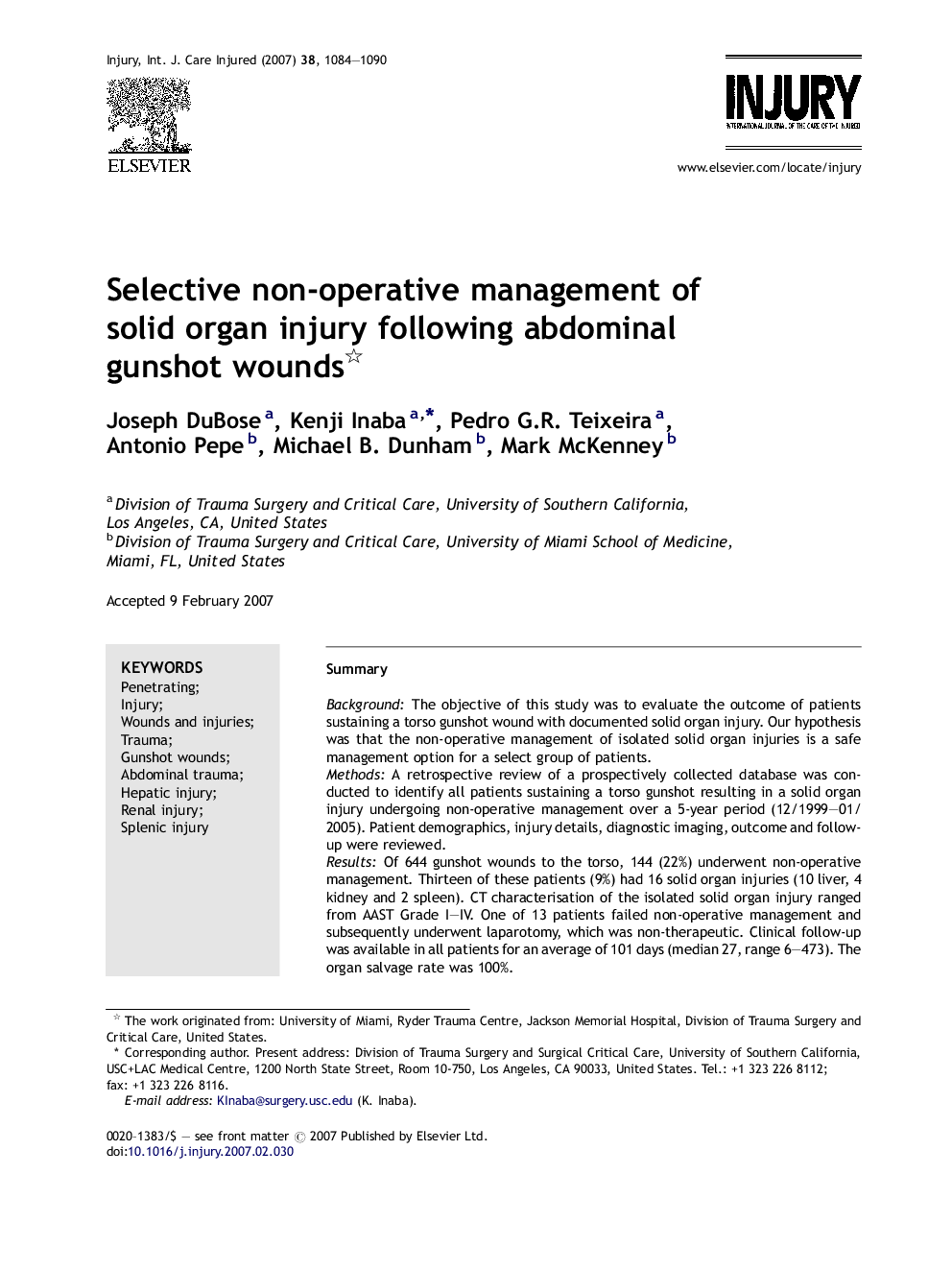| Article ID | Journal | Published Year | Pages | File Type |
|---|---|---|---|---|
| 3243117 | Injury | 2007 | 7 Pages |
SummaryBackgroundThe objective of this study was to evaluate the outcome of patients sustaining a torso gunshot wound with documented solid organ injury. Our hypothesis was that the non-operative management of isolated solid organ injuries is a safe management option for a select group of patients.MethodsA retrospective review of a prospectively collected database was conducted to identify all patients sustaining a torso gunshot resulting in a solid organ injury undergoing non-operative management over a 5-year period (12/1999–01/2005). Patient demographics, injury details, diagnostic imaging, outcome and follow-up were reviewed.ResultsOf 644 gunshot wounds to the torso, 144 (22%) underwent non-operative management. Thirteen of these patients (9%) had 16 solid organ injuries (10 liver, 4 kidney and 2 spleen). CT characterisation of the isolated solid organ injury ranged from AAST Grade I–IV. One of 13 patients failed non-operative management and subsequently underwent laparotomy, which was non-therapeutic. Clinical follow-up was available in all patients for an average of 101 days (median 27, range 6–473). The organ salvage rate was 100%.SummaryIn select haemodynamically stable patients without peritonitis able to undergo serial clinical examination, solid organ injury is not a contra-indication to non-operative management. In the appropriate setting, non-operative management of solid organ injury after gunshot wounding is associated with a high rate of success and organ salvage.
